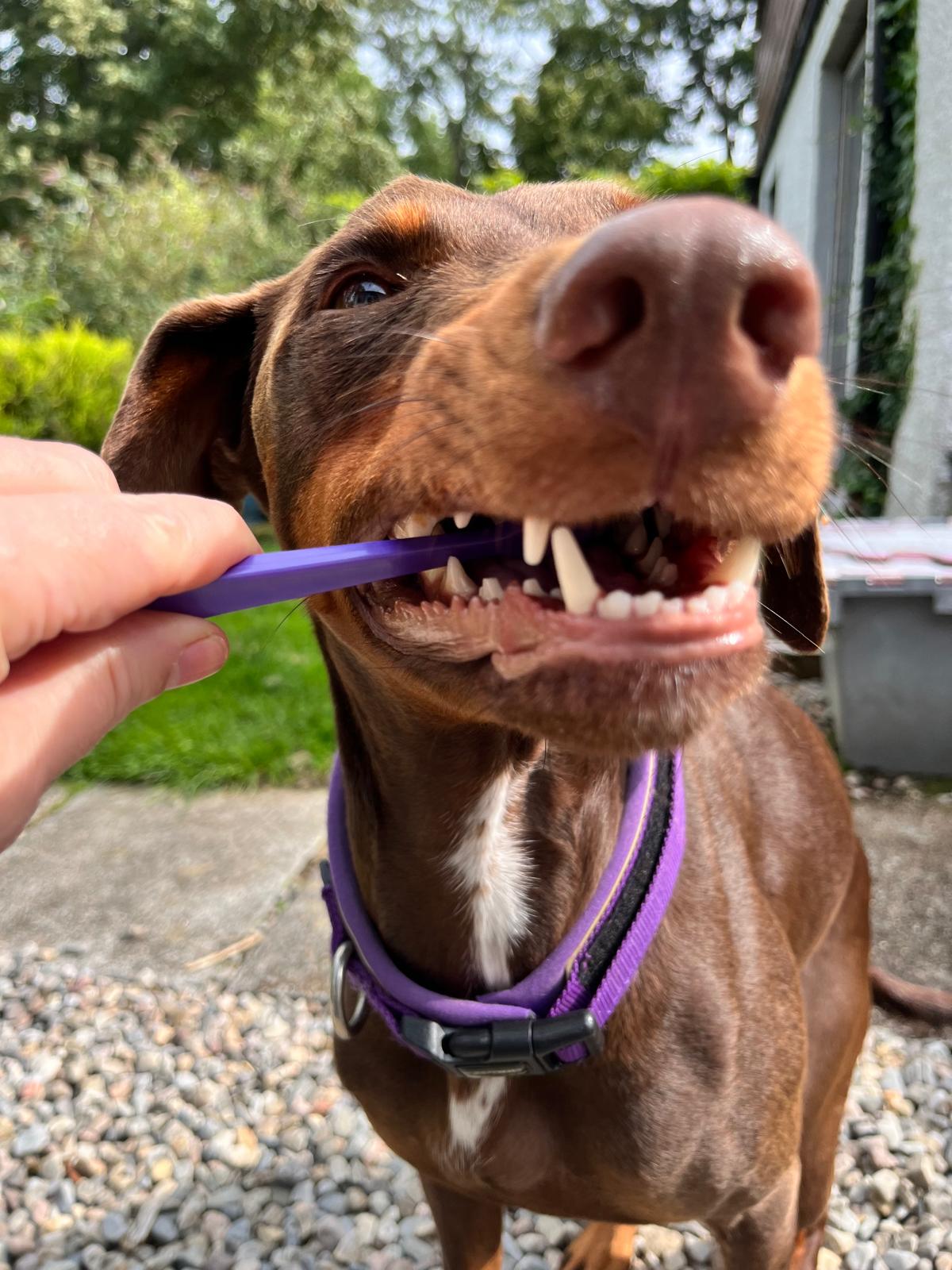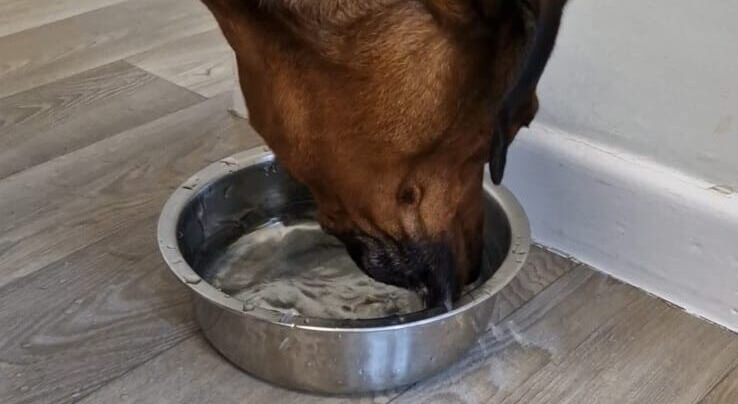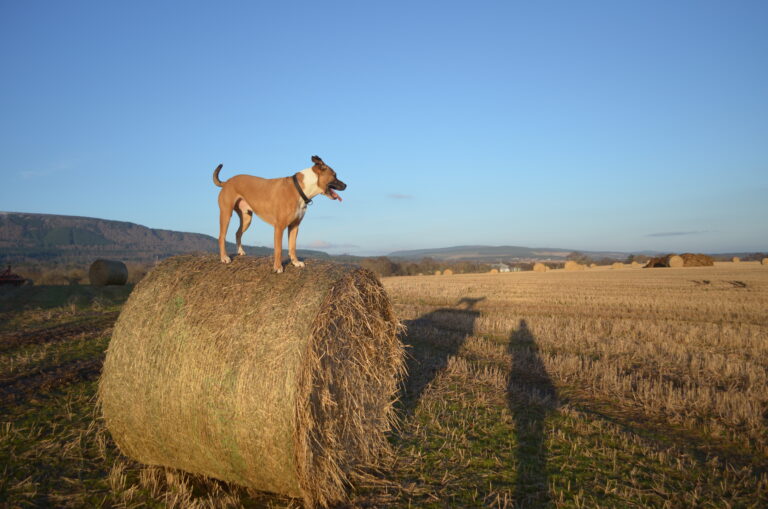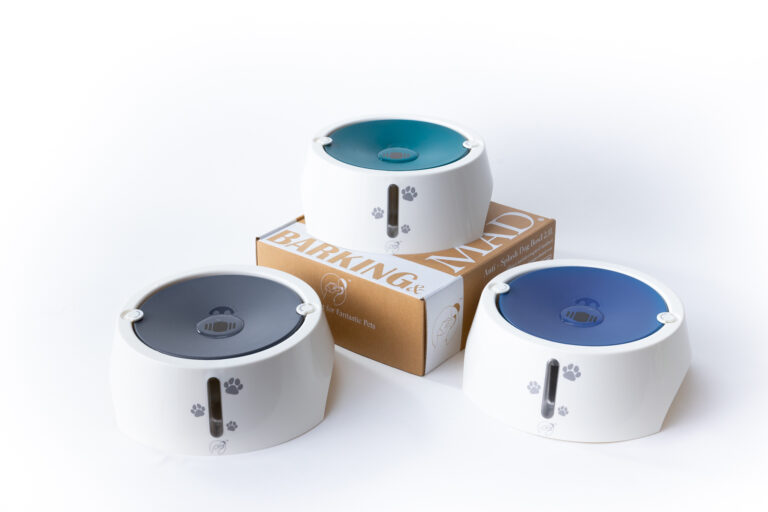When was the last time you brushed your dog’s teeth? If the answer is never or not often you’re not alone. Many dog owners overlook their pet’s dental care, not realizing how important it is to their overall health.
Just like humans, plaque and tartar can build up on a dog’s teeth and cause gum disease, tooth decay and tooth loss. But the good news is there’s an easy way to prevent and remove tartar so your pet’s oral health is at its optimum!
In this blog, I’ll get into why brushing your dog’s teeth is important, how plaque and tartar forms and what you can do to prevent and remove them.
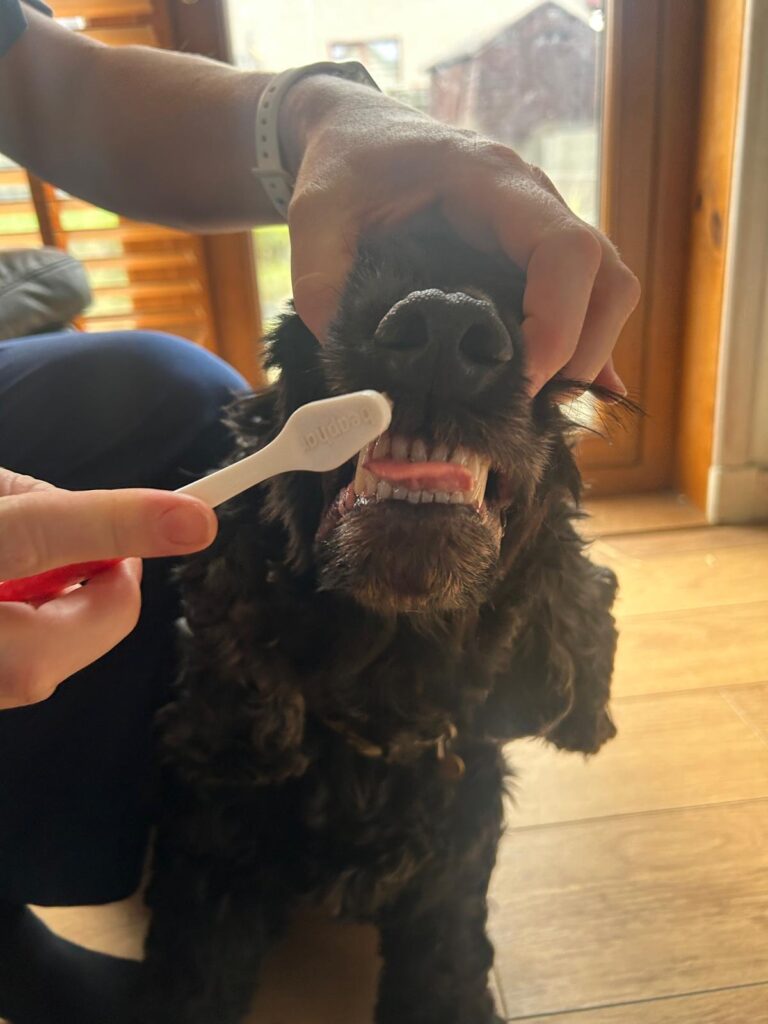
The Sneaky Enemy – How Plaque and Tartar Forms
Plaque, a sticky substance made of bacteria and food particles, starts forming on your dog’s teeth within hours of eating. Plaque builds up most along the gum line where it’s invisible but causes damage. This build up is also the cause of their horrendous dog’s breath! Without brushing, this plaque begins to hardens into tartar over the course of 72 hours. Tartar buildup creates a lovely rough surface for more plaque to stick to, thus creating a cycle of build up.
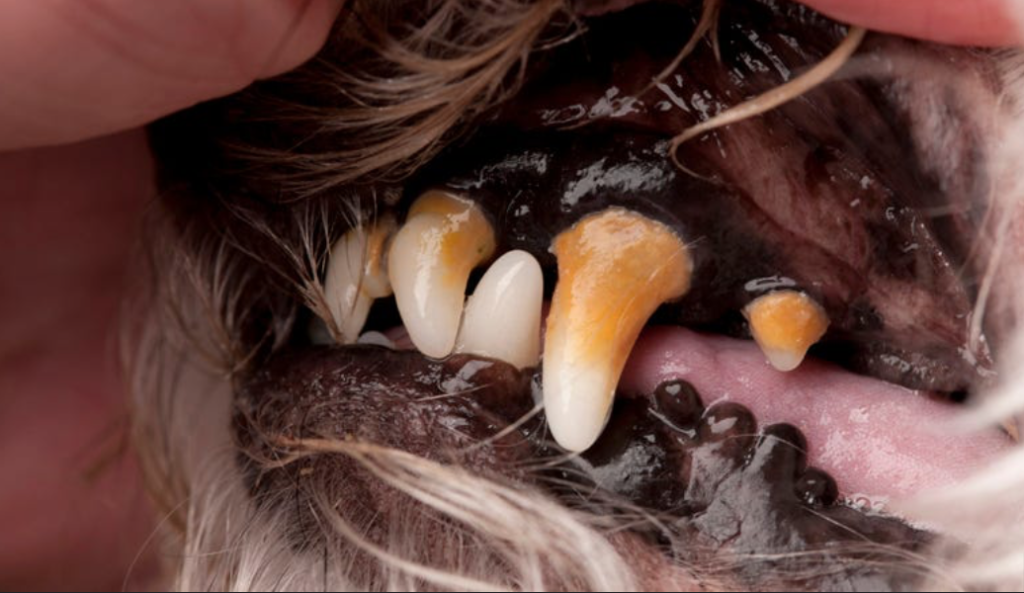
Essentially, the longer tartar is left on a dog’s teeth the worse it can become. Most dogs have some plague and a heavy buildup will irritate dog’s gums, causing inflammation (gingivitis) and eventually more serious gum disease. At this stage a professional cleaning may be needed to remove plaque and tartar that has settled into the gum line.
The Consequences of Neglecting Your Dog’s Teeth
Plaque and tartar build up isn’t just a cosmetic issue. Over time it can lead to serious dental problems like periodontal disease. This is when plaque hardens into tartar beneath the gum line causing infection, tooth decay and eventual tooth loss. If left untreated the bacteria from infected gums can enter your dog’s bloodstream and cause health issues in vital organs like the heart and kidneys.
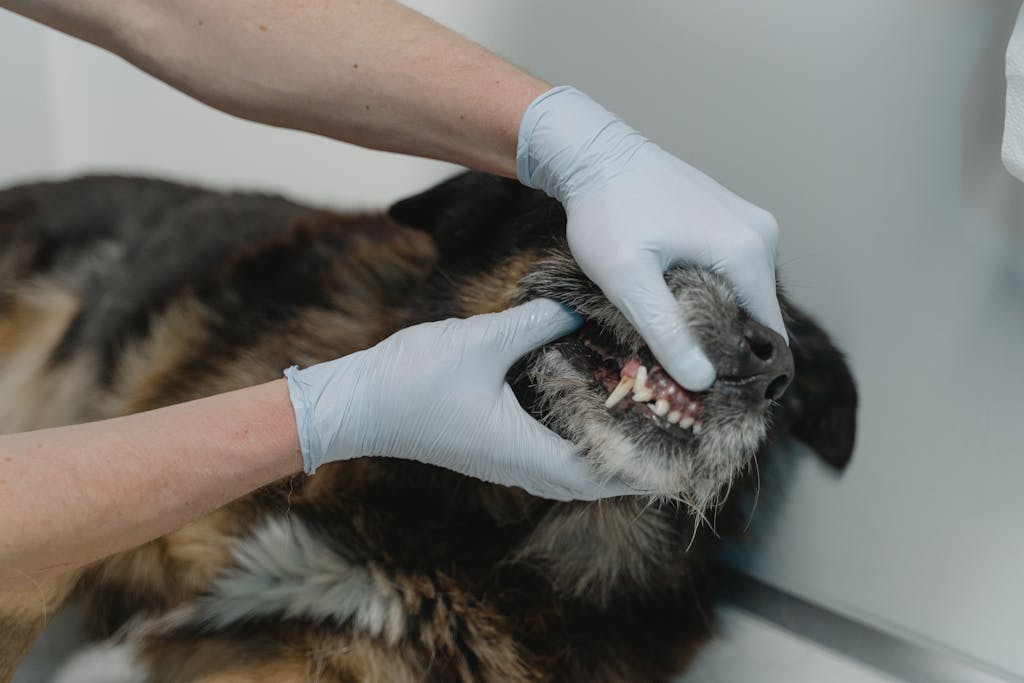
Tima Miroshnichenko
Bleeding gums, discolored teeth, bad breath and a reluctance to chew are all signs of advanced dental disease. By the time these symptoms show up your dog may already need professional cleaning which can be costly. It’s much easier (and cheaper!) to stay ahead of the issue with regular brushing, chew toys and dental chews that reduce plaque and tartar build up.
Why Brushing Is So Important
Imagine how your own teeth would feel if you didn’t brush them for a few days or even weeks. For dogs who can’t tell us when their mouth feels uncomfortable, brushing regularly can prevent a lot of pain and health issues. Some dogs don’t like the process at first but with patience and the right dog toothbrush it can become part of your routine.
Start Young With Oral Hygiene
Just like with human children the earlier you start taking care of your dog’s teeth the better their dental health will be in the long run. Puppies have an easier time adapting to new routines so introducing teeth brushing at a young age makes the process much smoother. Early care prevents plaque build up and prevents dental issues before they start and sets the stage for good oral hygiene habits for life.
By starting early you also reduce the need for costly dental treatments down the road. Puppies may not show signs of plaque or tartar immediately but early brushing keeps their teeth clean and healthy making the process less stressful for both of you as they age.
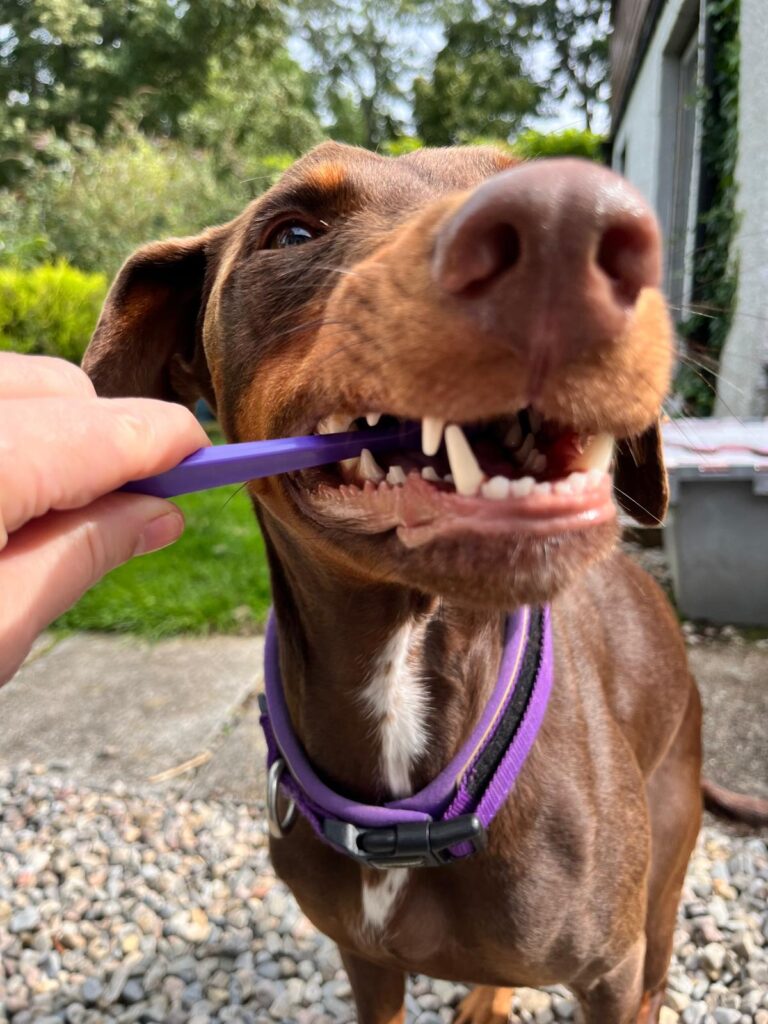
Using Dental Treats and Chews To Remove Dog Plaque
What if your dog doesn’t like brushing? Enter dental chews, dental treats and chew toys! Chewing helps clean your dog’s teeth naturally by scraping off food particles and preventing plaque from hardening into tartar. There are chews designed to target plaque so you don’t have to brush constantly. Most dogs love these treats so it’s an enjoyable way to keep their oral health in check. Look for products that target tartar prevention and remove dog plaque effectively.
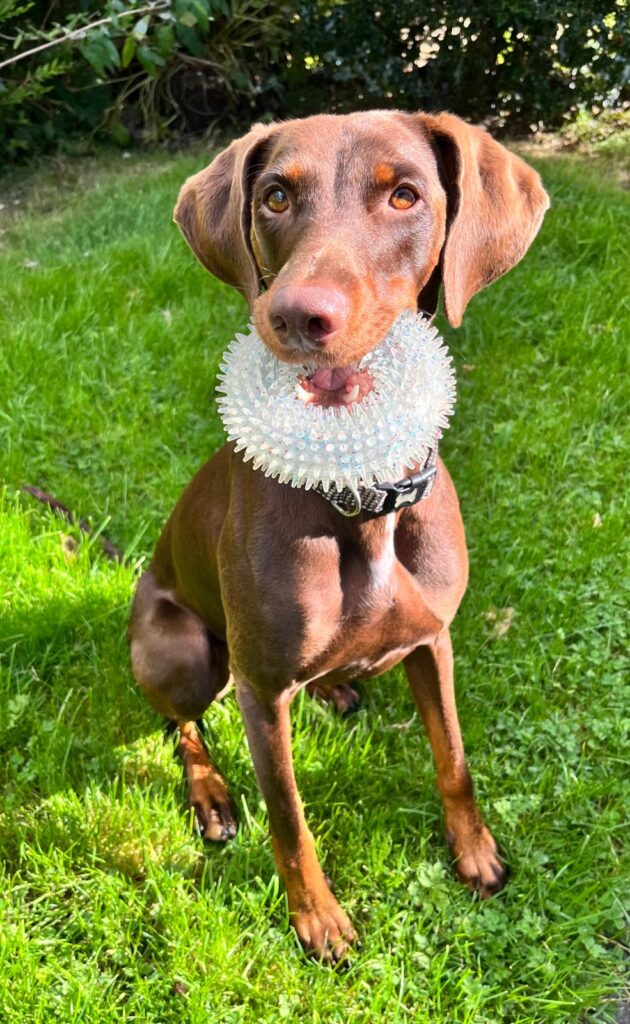
You can also use dental wipes which are easier to use than a toothbrush if your dog is fussy. These wipes clean the tooth surface and kill bacteria in your dog’s mouth. Combined with a healthy dog’s diet and regular use of treats these methods give you a comprehensive approach to your dog’s oral hygiene.
Tartar Removal: What You Can Do At Home
So you’ve seen some tartar on your dog’s teeth. Now what? Luckily you can do several things at home to remove tartar safely.
Brushing with Enzymatic Toothpaste: Dog-safe enzymatic toothpaste has natural ingredients that break down plaque and tartar. Never use human toothpaste as it’s toxic to your dog.
Dental Toys and Chews: Many dogs chew toys that target the rough surface of the teeth and remove plaque. These are an easy and fun way to keep your dog’s teeth clean between brushing sessions.
Oral Rinses: Some vets recommend oral rinses that contain ingredients that soften tartar and make it easier to brush away. These are safe for dogs and can be added to your dog’s water bowl.
Diet and Treats: A dog’s diet can also contribute to plaque formation. Avoid sugary foods and opt for treats that prevent plaque build up. The best food for your dog’s dental health will often prevent plaque accumulation.
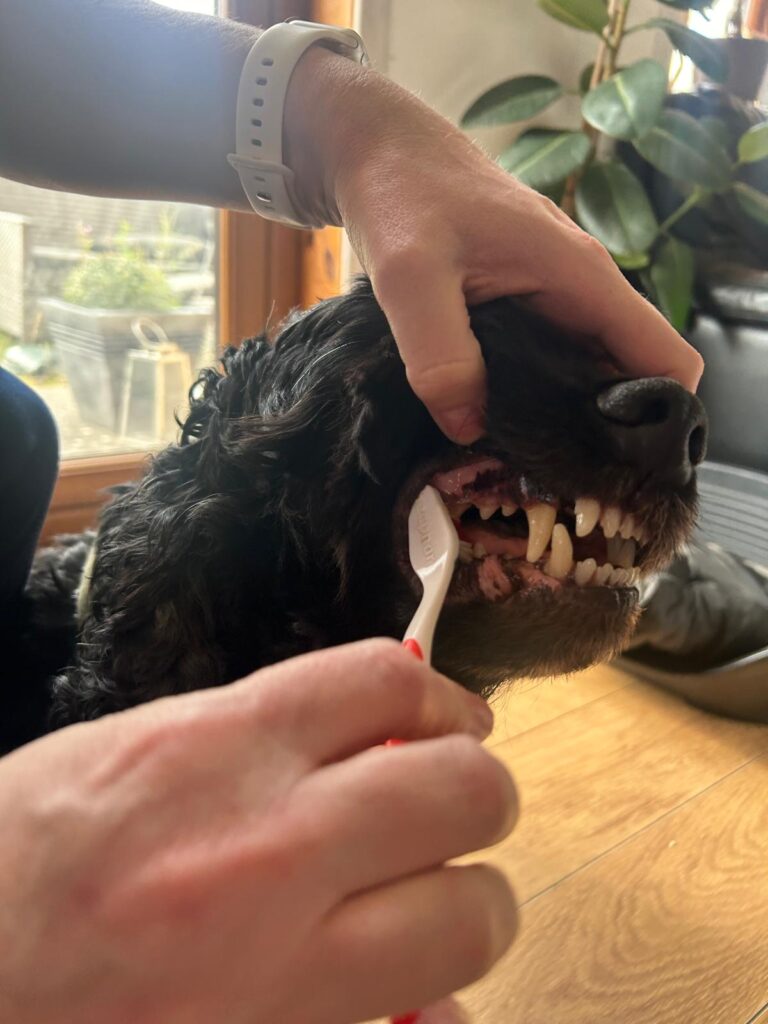
Professional Cleaning: When Home Remedies Don’t Work
If your dog’s tartar has gotten out of control a trip to the vet is necessary. Professional dental cleanings involve scaling away tartar above and below the gum line. It’s costly but often necessary to prevent further dental problems from developing. Regular vet checkups can also catch early signs of gum disease before they progress.
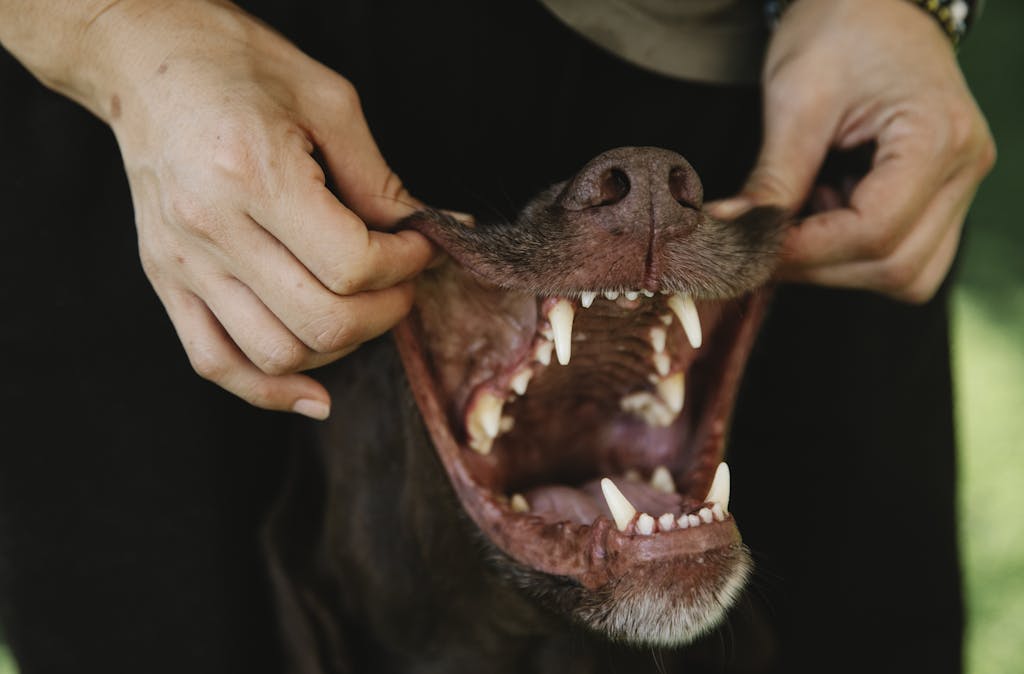
Blue Bird
Still Have Questions? You made it to the FAQs!
How do I get plaque off my dog’s teeth?
Plaque can be removed by brushing your dog’s teeth regularly with dog-safe toothpaste, using special chews and providing your dog with chew toys that clean teeth.
What does plaque look like on dogs’ teeth?
Plaque appears as a sticky, colorless film on the tooth surface but as it hardens into tartar it becomes more visible as a yellow or brown stain.
How much does it cost to remove plaque from a dog’s teeth?
A professional dental cleaning to remove too much plaque from a dog’s teeth can cost between £200 to £600 depending on the amount of tartar.
Is tartar painful for dogs?
Yes, tartar can be painful by causing gum inflammation, gum disease and eventually tooth loss.
What is the black tartar on my dog’s teeth?
Black tartar is advanced plaque that has hardened and combined with food debris and bacteria.
What causes calculus in dogs?
Calculus or hardened tartar forms when dogs plaque is not removed over time due to insufficient oral care, and it mineralizes on the teeth. This can only be removed by a professional.
Can I scrape my dog’s tartar?
Leave tartar removal to the pros, improper scraping can damage the teeth and gums.
How to soften dog tartar at home?
Use enzymatic toothpaste, oral rinses or provide chews to soften tartar over time.
Do vets remove tartar on dogs’ teeth?
Yes, vets do cleanings to remove tartar from a dog’s teeth, usually under anaesthesia.
At what age do dogs get tartar on their teeth?
Tartar can start forming as early as one to two years old depending on the dog’s diet and oral hygiene.
What are the stages of tartar in dogs?
Tartar progresses from soft plaque to hardened tartar to gingivitis, periodontal disease and eventually tooth loss.
What food causes tartar on dog’s teeth?
Sugary foods and soft diets contribute to faster tartar buildup while hard kibbles and dental chews help reduce it.
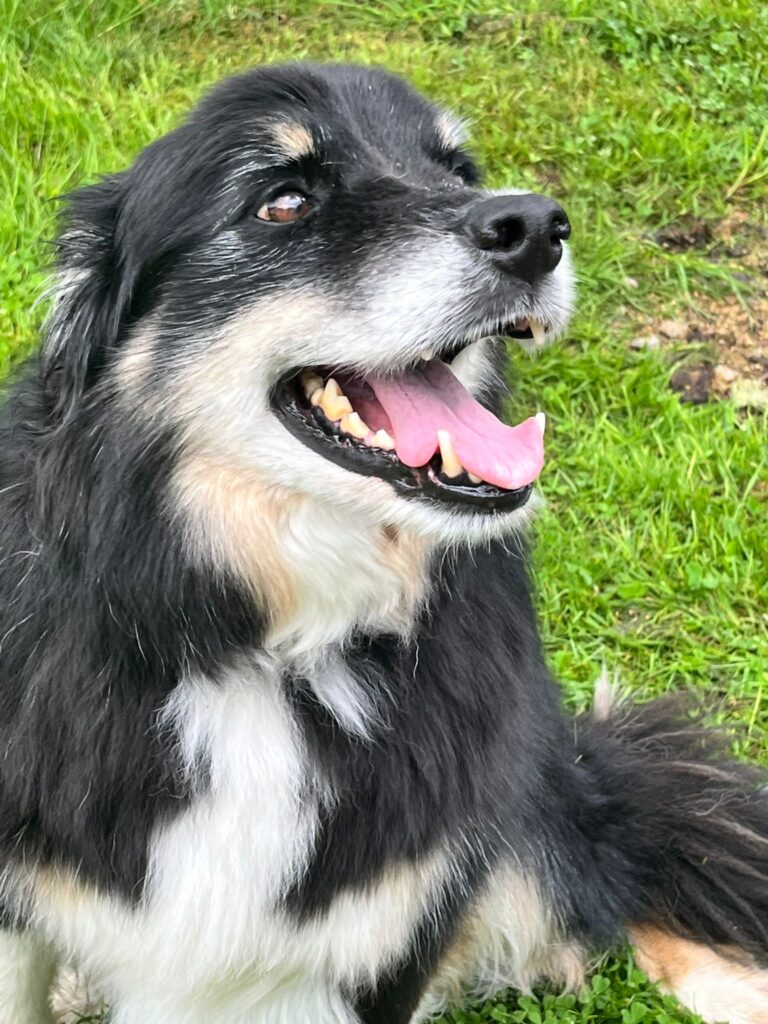
Conclusion: Keep Your Dog’s Smile
In summary, your dog’s dental health is important to their overall health. Frequent brushing, dental treats and chew toys are the key to preventing plaque and tartar buildup. Just like we take care of our own teeth, our pets deserve the same care to prevent gum disease, tooth decay and other health issues. By making dental hygiene a part of your dog’s daily routine you’ll not only have a healthy mouth but a long happy life.
Let’s give our pups the smile they deserve!

